 Peter Handy has kindly agreed to share his Reiki story, including publishing a “Reiki Diary” that he kept during the first four weeks after learning Reiki. Here is what Peter has to say…
Peter Handy has kindly agreed to share his Reiki story, including publishing a “Reiki Diary” that he kept during the first four weeks after learning Reiki. Here is what Peter has to say…
“Four years ago I took a Reiki course provided by my local carers association. I had been a full time at home carer for my wife for 14 years. She had suffered several strokes over the years, the first one 30 years previously, shortly after we were married. My daughter who was 22 at the time I did the course, was also suffering health problems and as she lived alone and over 10 miles away I was doing a lot of travelling between our homes. In short it was all getting to me, I developed depression, and the Reiki course was part of my reigime to combat the depression and get off the tablets. I did my level one Reiki and since then have used it for self healing, and for my wife and pets. Reiki helped me to come off medication and helps my wife to bear the pain that is largely resistant to strong pain killers including morphine.
We, (the students on the course) were encouraged to keep a Reiki diary for the first 4 weeks after attunement, and I recently came accross mine, the rest of this story is copied from that diary more or less verbatim, exept where clarification needed a few extra words. When refering to muscle spasms/-pains, Reiki was not used as a stand alone treatment. Pain killers and muscle relaxants were used as well. Any effects My Wife Linda reported were over and above what she would have expected from medication alone. On occasions the Reiki does not appreciably lessen the pain ,which can be exteme at times, but she always said it helps her to cope better with it. It certainly gives me a lift knowing I can actualy do something practical to help her.
Wed 12th December 2007
Attended the Quaker Meeting house in Newcastle-u-Lyme for Reiki first degree seminar, Teacher – Nicola Brough.
Following the attunement – First attempt with fellow student, she felt more effect on her heart and abdoment areas which I did ‘hands off’ than on the head/neck area which I did hands on. When she practiced on me I did a silly thing, I tried to see what would happen if I resisted or tried to channel energy while she was treating me. What happened then wasn’t static electricity because she had been ‘hands on’ for a minute or so, but she immediately recoiled and said she had got a shock from my forehead (I wont try that again!)
Thurs 13th
am. Short treatment on my wife , top of head, then front/octipical. She lay in bed with severe head/neckpain. After treatment pain was less. She described front/occtipical position as partly closing a curtain on the pain. Pain receeded from eye and neck but overall headache remained. pm. self-heal.
Fri 14th
Treated my daughter . she’d had a headache for 2 days. Used head and shoulder positions. She reported cold sensation radiating down through her head. Headache was not cured but she felt more energised and her mood lifted. pm. self-heal.
Sat 15th
Ready to go out for Xmas lunch with her family, Linda felt ill and had headache. We had a little time, so I stood behind her as she sat in her wheelchair and we did Reiki. Afterwards, she said the experience was ‘something else’. Her abdomen chakra opened immediately and was ‘buzzing’. I felt the energy was building very slowly with little or no sensation in my hands.I concentrated harder and was aware of an increase in energy flow. At this point Lindas pain rose breifly followed by a sudden release of emotion and a reduction in her pain levels. It was if a blockage had been cleared. She coped well with the day, and she was on good form, which she would not have been had the bad head persisted. pm. self-heal.
Sun 16th
Saw Jo my daughter to fetch and deliver her new sofa. her headache had improved after Fridays treatment, but had since returned. She had migraine symptoms. Light headed, speech a bit muddled, left sided headache. I did longer treatment today, her sitting on a chair, hands off, over crown of head, then front to back left side of head, then sides of head, then neck/shoulders. As I moved down to her chest/back, still with hands about 6″ from the body, she suddenly reacted to a sensation of heat to her solar plexus.She opened her eyes to see my hand over that area. She said it felt weird* but wanted to continue. I told her to leave her eyes open if she wanted to, so there would be no suprises. I repeated the crown of head, hands on. She was clearly affected by the teatment and felt faint, so I left as she went to bed. She phoned 2 hours later to say how pleased she was that her migraine had stopped.
I had started with a headache and had been sweating and coughing on the drive home, and felt I was starting with a cold. I later self-treated my head, throat, and sinus area and the cough ceased.
Tonight I self-healed and tried to let go of many negative thoughts and emotions.Some are long standing and will need ongoing effort. My heart chakra is difficult to open and causes some discomfort. I have been working on my base and feet and seem to be making a little progress.
Mon 17th
self-treatment.
Tuesday 18th
Treated Linda as she lay in bed with bad head and muscle spasms. She then slept after feeling the tension release from her neck.
self-treatment.
Wed 19th
am, self-treat. Gave Linda Reiki to head and shoulders in the few minutes before she went out shopping with her sister. I had cold hands but she felt heat, she felt calmer and her breathing steadied. She saw ultramarine or cerulian? blue colours as the tension released. pm. self-healed.
Thurs 20th Dec
Tried static self-healing**, No hand positions used, just sat and recieved the energy.
Fri 21st
Linda got sudden rt side head/eye/neck pain. Drugs didn’t seem to be helping. Reiki ‘narrowed’ the pain enough for her to be able to get to bed.
She said the head and neck treatments were very powerful and she felt stronger and more able to stand the pain. Once we were upstairs I treated again both of us sitting on the bed. She made a gutteral sound as her throat chakra opened and she/we became emotional. She lay down feeling more relaxed.
Sat and sunday 22, 23rd
self treated,
Mon 24th
Self healing, then treated jack our old dog, who is suffering a bit. he was quite frisky afterwards, (could be because he hasn’t had much fussing lately)
Tuesday 25th
I treated Linda as she lay sleeping (we had agreed this would be OK to do previously). Hands on hip and shoulder area.
(Next day she said she had had a nice dream, lying in a meadow, sun shining, tall buttercups, and as she lay dozing in the sun her heart chakra opened up.) Self-healed.
Wed 26th
am. Treated Linda as she lay in bed, hands on head, then hips and shoulders. She felt those areas shimmering for some time afterwards.
pm, Linda developed a migraine, I treated her sitting on the bed, and she saw a complete rainbow or color wheel (hard to describe). She started to giggle as I worked over the midriff area. Then she was treated laying down and she had a strong throat reaction, and saw a vivd flash as i was doing hands off work to the soles of her feet. later on did self healing.
Thurs 27th
am early, did short self-healing before getting out of bed.
Fri 28th
am, did self healing sitting downstairs, after taking Lindas breakfast up. Linda told me she has had very bad eye/head/neck pain since 4am, so after self-healing I treat her as she id lying in bed, sitting alongside in a chair.
1st) hands on hip and shoulder, we got immediate response which stopped the pain!
2nd ) hands on, sacral and top of neck.
3rd) side of neck at base of octipical, fingers touching only.
4th) forehead-base of skull, hands on.
5th) One hand on crown.
6th) Each foot in turn.
Linda said it was the best treatment yet, the first to completely eliminate the pain. She felt shimmery for some time afterwards. I checked in on her about 10-15 minutes later and I felt engergy coming from her as I walked around the bed, like radiation from a crystal but bigger.By bedtime she was ‘going off’ again as she was tired, but it was 10.30. note: it is a rare occurence for Linda to be pain free.
Sat 29th
am, self-healing. treated Linda as she was lying in bed with a bad head. The pain diminished to the point where she was able to get up and go out for a drive and a walk around a local beauty spot (I walk Linda uses electric wheelchair) but the headache didn’t completely clear up like yesterday.
Sun 30th Dec
Linda poorly, to the point where she was agitated/emotional. Headache, itching skin, and legs rigid with spasm. treated at 10.50am. Her neck muscles relaxed, but arm/leg spasm persisted and her headache was still there. I treated her again in the evening with more success, and I tried to cocoon her her with energy at the end of the Reiki treatment, bearing in mind her need for emotional comfort and support. I didn’t tell her what I was attempting as she rested with eyes closed, and it was just an instinctive thing on my part. I drew the shape of a cocoon around her in the air with my hands, I and tried to fill it with loving energy. The next day without any promting she said she had felt protected by a bubble or aura, and that she felt she could have touched it if she had tried. I can’t remember reading or hearing of anyone doing this cocooning, but it seemed to work. self-healing before bed.
Mon 31st
I started with a migraine in the afternoon, the first for a few weeks. I didn’t take tablets but tried self healing with reiki. The typical visual distrurbances continued, but it didn’t develop into the usual throbbing head/nausia session. further self-healing before bedtime.
Tues 1st Jan
Did self-healing at night time, then treated Linda as she lay in bed tired and with a headache. She relaxed and slept well, and only got up twice in the night to go to the toilet instead of the normal 4-5 times.
Wed 2nd
pm.Treated Linda as she lay in bed, ner neck pain subsided, and I again tried to cocoon her, and she said it worked again.
Thursday 3rd
Self healed am, before going to take Jo shopping.
Fri 4th
self heal after lunch, then treated Linda, her lying in bed, back towards me as I sat on a stool at side of bed. Rt hand on crown and left on hip, then below the base, hand off. Pain in rt eye increased before reducing. Spine, sacral-back, then sacral-neck. Both hands over then on shoulders/neck area. Feet, right first then left. Cocoon. Her eye/head pain went in the first couple of minutes of hands on the crown of head and other hand below the base chakra. From that point on she gradualy went into a deeper state of relexation, and finaly felt cocooned. She sais the cocoon was strong and felt it would have moved with her if she had moved. She slept, and felt well enough to get up after a couple of hours.
Sat 5th
Self healed. Linda in bed with ususal head/eye/neck pains. Hands on head and shouldersrelaxed the the neck but eye pain persisited. Worked on back and tummy area as she had been having constipation pain since yesterday. Then as I worked on her left foot her eye pain went away. She felt the energy rising up from her foot and through her body and when it reached her head the pain stopped. 20 minutes after treatment she opened her bowels.
Sun 6th
self treated.
Monday
2.45am Linda awake with bad head, gave short hands-off to her neck as I lay falling asleep and it helped her to relax and get back to sleep.
Later on I went to Nicola at Burslem for Reiki treatment, I was tired beforehand, I was still very tired but relaxed afterwards and had an early night!
Tues 8th
Noon, Reiki on Linda, for head pain and muscle spasm. She felt a hand on her heart chakra long after I had removed it ,and she touched the area a couple of times to check (she lay with eyes closed). She relaxed and her eye pain ceased. I worked on her feet for 15 minutes and she felt the energy rise upwards through her body. I then did self-healing. I concentrated on the area that Nicola had been working on yesterday, as I could feel something happening in my rt side sacral area but I concentrated more on the central spine area. (I have had back problems for many years).
Afterwards I felt as if I was standing differently, either taller or straighter or both, and my balance felt a little weird. I also felt more awake, not so tired and with an elevated mood.
Wed 9th Jan
Self healed, finished after midnight, I must start earlier.
**On 20th dec I was just sitting, reading the level one manual and as I read about the hand positions and the chakras I was feeling a physical effect. For example as i read about the chakras my chest area started reacting. I decided to go through the self healing routine but just sit and imagine. The effect was just as if I was placing my hands in the positions. I imagined my hands on the front of my face covering my eyes, and i felt energy on that area. When I went on to the next position I still felt the energy in the previous one. As I progressed from one imagined hand position to the next I quicky ran through all the previous ones. In this way i eventualy felt as though I had several pair of hands working on me at the same time. I have tried this since and it works quicker If I briefly put my hand on the place , and it sort of jump starts the proccess.
My wife has remarked on a similar effect, sometimes feeling as though I still had a hand on a part of the body I had moved away from.
*My daughter found the unexpected charge of energy a little disturbing. Even though Reiki seemed to help, and I offered to perform Reiki any time she wanted, she has never asked, and I haven’t offered since. It seems to me that ‘hands off’ generally speaking gives more of a sudden surge of energy while ‘hands on’ builds up slowly. Being an ex-mechanic I liken this to a slow discharge of electricity, compared to the ‘spark’ you get when electricity jumps over an air gap in a spark plug.
Using a family member as my ‘client’ has been invaluable. At the start, I asked Linda to give me honest feedback about what she felt and what effects if any ,the Reiki delivered. In any case she is a disarmingly honest person, and in her own words ‘she never bullshits’.
From previous experiences, (she once did an aromatherapy course, and she had regularly visited a spirit healer some years before), I knew she was very sensitive to subtle energy. She would buy crystals and say” just hold that it’s really buzzing” but I would seldom feel anything. She can’t stay in one of those large crystal shops with the huge geodes for more than a few minutes, as it jangles her nerves. The first time the healer put a crystal under the couch Linda knew straight away that something was under her. My Reiki of late has been a little seldom, but re reading the diary has reminded me how much it has helped and I will return to using it more often in the future.
Thank you for reading my story.
Peter Handy
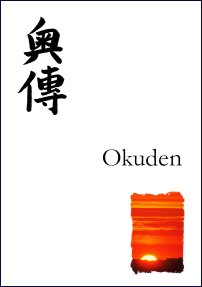 A big part of our Second Degree course involves helping people to work intuitively, so that the energy guides your hands to the right place to treat for each client.
A big part of our Second Degree course involves helping people to work intuitively, so that the energy guides your hands to the right place to treat for each client.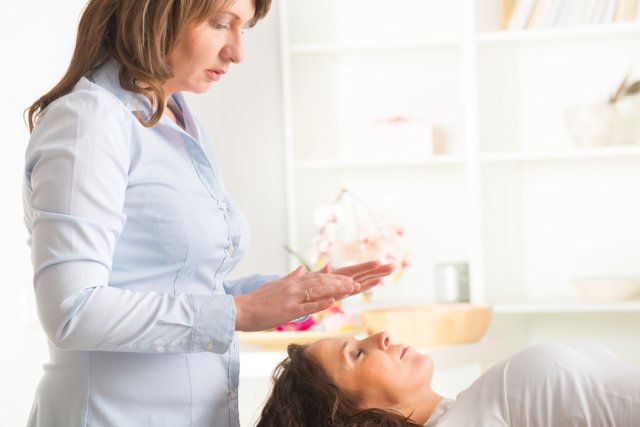

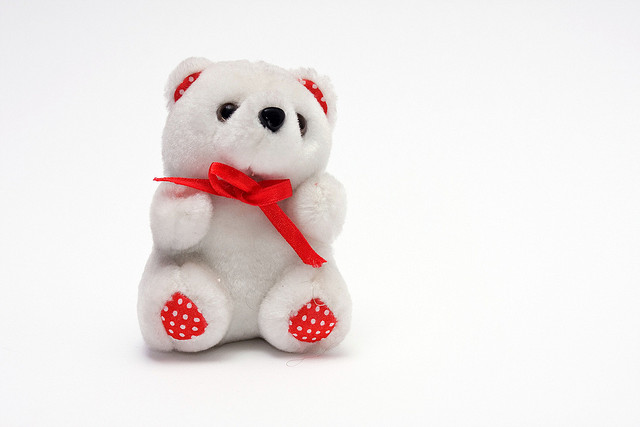

 Hannah Shine is one of Taggart’s Reiki Evolution team of teachers, based in Essex/Hertfordshire. She is also a multi therapist, practising from her home at Hatfield Heath. Her Reiki courses are run from her beautiful summer house in her relaxing garden. Her therapies include homoeopathy, reflexology, Bowen technique, head massage, body massage, kinesiology, EFT (Emotional Freedom Technique), Quantum Touch and many others. She runs monthly Reiki shares at her home. She has qualified as a Cognitive Hypnotherapist at the Quest Institute in London.
Hannah Shine is one of Taggart’s Reiki Evolution team of teachers, based in Essex/Hertfordshire. She is also a multi therapist, practising from her home at Hatfield Heath. Her Reiki courses are run from her beautiful summer house in her relaxing garden. Her therapies include homoeopathy, reflexology, Bowen technique, head massage, body massage, kinesiology, EFT (Emotional Freedom Technique), Quantum Touch and many others. She runs monthly Reiki shares at her home. She has qualified as a Cognitive Hypnotherapist at the Quest Institute in London.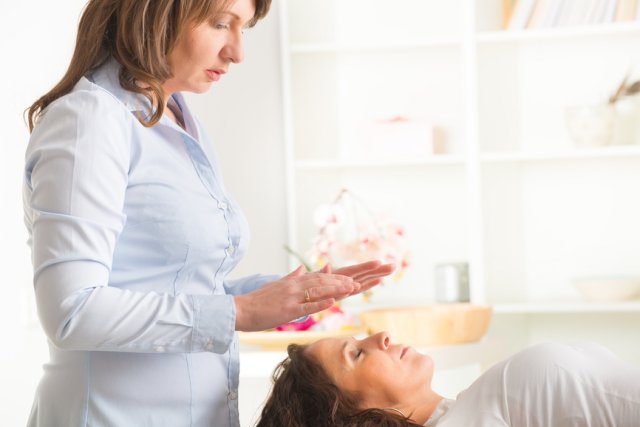
 Linda Vickers is one of Taggart’s Reiki Evolution team of teachers, based in Tyne & Wear. She is also a therapist, practising from her home at Hetton le Hole in Dragonfly Hut in the beautiful garden. Her Reiki courses are also held in a special room in her home where she also teaches other workshops. Her therapies include, reflexology, Indian head massage, crystal healing, hopi ear candles and meditation. She also holds a monthly Reiki Share and various open days.
Linda Vickers is one of Taggart’s Reiki Evolution team of teachers, based in Tyne & Wear. She is also a therapist, practising from her home at Hetton le Hole in Dragonfly Hut in the beautiful garden. Her Reiki courses are also held in a special room in her home where she also teaches other workshops. Her therapies include, reflexology, Indian head massage, crystal healing, hopi ear candles and meditation. She also holds a monthly Reiki Share and various open days.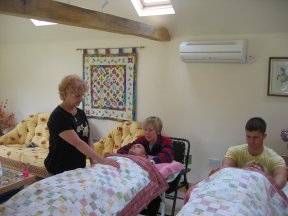
 Louise Heseltine is one of the Reiki Evolution team of teachers, running courses in Kent. Louise began teaching Reiki in 2005 and has worked as a complementary therapist, offering Reiki, aromatherapy (Tisserand trained), reflexology and Indian head massage. Louise also runs Reiki Retreats and has taken Reiki people to Egypt and run regular retreats to Spain to develop their healing skills.
Louise Heseltine is one of the Reiki Evolution team of teachers, running courses in Kent. Louise began teaching Reiki in 2005 and has worked as a complementary therapist, offering Reiki, aromatherapy (Tisserand trained), reflexology and Indian head massage. Louise also runs Reiki Retreats and has taken Reiki people to Egypt and run regular retreats to Spain to develop their healing skills.